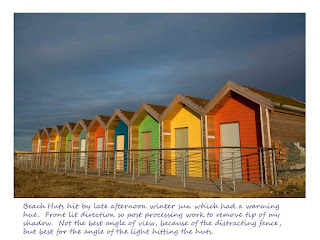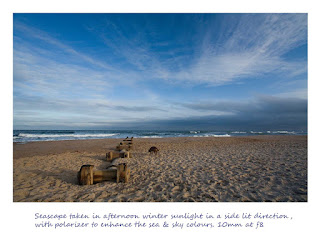I have had this book for a few months now and have dipped into it now and again. I intend to read it alongside the "Artificial Light" section of the course. It was recommended because it facilitates understanding of light, by explaining physics in ways that are easy to understand. Lighting effects come in and out of fashion, and new equipment is coming out all the time, but the laws of physics don't change. Therefore I figure that by studying this book in depth, I will save money over time on seductive lighting equipment (always looking to save money!).
Unbelievably, I got an A grade in A' level physics less than 20 years ago. I think I must have left my brain on a bench in Amsterdam because it's like starting from scratch.
The book contains experiments & projects, and I will upload some of the results onto this post.
Update 20 June 2010
Well I've ploughed through chapters 1-4 of this book, and it has been a challenging but stimulating learning process. I enjoy science, although I find the application into practical photography quite a big leap. The first 3 chapters are about principles and chapter 4 is the first practical application into surfaces. I thought it would be useful to summarise some of the key learning points gained so far.
There are 3 important principles of light which predict how it will behave:
- The effective size of the light source is the single most important decision in lighting a photograph
- Three types of reflection are possible from any surface. They determine why any surface looks the way it does and are diffuse reflection/ direction reflection and glare.
- Some of those reflections occur only if light strikes the surface from within a limited family of angles.
There are 3 attributes when describing the light - brightness, colour & contrast. Colour is classified by the Kelvin temperature scale (and is what I have been looking at in projects 51 - 53). A high contrast light source is also known as a hard light and occurs when its rays all strike the subject from nearly the same angle. Shadows are sharp & clearly defined. Therefore a low contrast, soft light is when light strikes from many different angles i.e. diffused light. For a single light source, the size of that source is the primary factor influencing its contrast.
Photographic lighting is the interaction between the light itself, the subject & the viewer.
A subject can do 3 things to the light that strikes it:
- Transmit it (e.g. glass). This can be direct transmission or diffuse transmission of translucent subjects.
- Absorb it (e.g. black velvet). Most subjects only partially absorb & selective absorbtion determines colour.
- Reflect it. This is the most relevant to photographers and can be diffuse reflection, direct reflection or glare (polarised reflection).
Diffuse reflections are the same brightness regardless of the angle from which they are viewed, and examples are white card, light blue tissue paper etc.
- NOT AFFECTED BY ANGLE OF LIGHT
- NOT AFFECTED BY CONTRAST OF LIGHT SOURCE
- ARE AFFECTED BY DISTANCE FROM THE LIGHT (inverse square law - see project 55)

Direct reflections are a mirror image of the light source that produces them.
- THE ANGLE OF INCIDENCE EQUALS THE ANGLE OF REFLECTION
- THE REFLECTION IS AS BRIGHT AS THE LIGHT SOURCE ITSELF, HOWEVER THE SIZE OF THE REFLECTION IS DETERMINED BY THE DISTANCE FROM THE LIGHT
Direct reflections are used to determine the family of angles for a surface, and this determines where we should place our lights. A light placed outside of the family of angles will not produce direct reflection.
Polarised reflections are similar to direct reflection in that the angle of incidence equals the angle of reflection but a polarised reflection is always substantially dimmer than a photograph of the light source itself. Glossy subjects produce a greater amount of polarised reflections, and they are more visible with black or transparent subjects because they produce weaker diffuse reflection so it's easier to see the direct reflections.
Some points as to whether a reflection is polarised or direct reflection;
- If a subject is made of a material that conducts electricity, its reflection is likely to be unpolarised;
- Therefore electrical insulators such as plastic, glass & ceramics are more likely to produce polarised reflection
- If the surface looks like a mirror, it is likely to be simple direct reflection.
- The conclusive test is the appearance of the subject through a polarising filter.
Placing a polarising filter over a light source and turn a direct reflection into a polarised reflection. As the open sky is a polarised light source, this can mean that sunlit metals etc. actually produce polarised reflections.
I found the section on polarised light & reflections the hardest bit of the book to get my head around, but it is pretty key. From now on, I will simply upload any of my results from any experiments that I do as I work my way through the book (e.g. photographing certain surfaces, texture etc.)





































